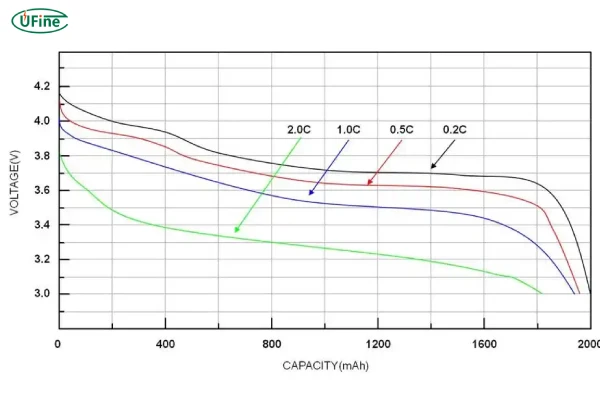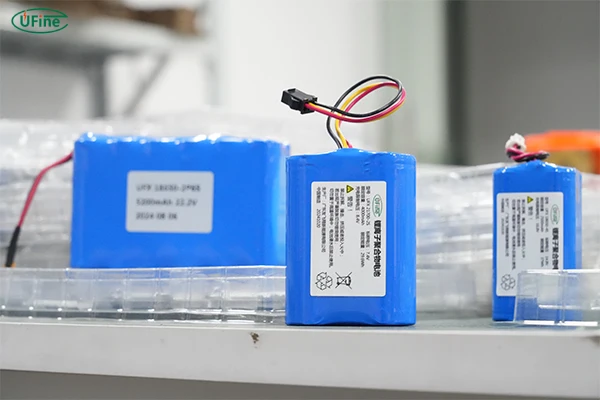
- Part 1. What are battery charging and discharging rates?
- Part 2. Common battery charging and discharging rates
- Part 3. How to know the battery charging and discharging rates?
- Part 4. How does the charging and discharging rate affect battery performance?
- Part 5. The effect of charge and discharge rate on battery capacity
- Part 6. How to optimize charge and discharge rate to increase battery capacity?
- Part 7. Conclusion
Batteries are at the heart of almost everything we use today—from our smartphones to electric vehicles (EVs). Yet, behind their silent power lies a critical factor often overlooked: the charging and discharging rates. These rates can make or break battery performance, lifespan, and even safety.
If you’ve ever wondered why your phone heats up while charging or why your EV’s range seems shorter than expected, the answer may lie in how you’re handling these rates. Let’s explore what charging and discharging rates are, why they matter, and how you can optimize them to get the most out of your batteries.
Part 1. What are battery charging and discharging rates?
At their core, the charging rate and discharging rate define how fast a battery is charged or how quickly it releases energy. These rates are typically measured using C-rate, a standard that simplifies understanding.
Charging Rate
What does C Mean in Batteries?
The charging rate tells us how fast a battery can store energy. The C-rate defines the time it takes to fully charge the battery:
- 1C means the battery charges completely in one hour.
- 0.5C means it takes two hours to charge.
- 2C indicates the battery charges in just 30 minutes.
For example, if you have a 2,000mAh battery:
- At 1C, it charges at 2,000mA (or 2A), filling in one hour.
- At 0.5C, it charges at 1,000mA (1A), taking two hours.
Discharging Rate
The discharging rate refers to how fast the battery depletes its stored energy. Again, C-rate is the standard:
- 1C discharges the battery completely in one hour.
- A 0.2C rate takes five hours.
- At 2C, the battery discharges in 30 minutes.
For the same 2,000mAh battery:
- At 1C, it discharges at 2,000mA, lasting an hour.
- At 0.5C, it outputs 1,000mA, lasting two hours.
These rates directly impact how quickly you can use or recharge the battery.
Part 2. Common battery charging and discharging rates
Different battery types and applications come with their own typical charging and discharging rates. These vary based on design, chemistry, and intended use.
Lithium-Ion Batteries
- Charging Rates: Typically range from 0.5C to 1C. Fast charging options may go up to 2C, but this can strain the battery.
- Discharging Rates: For regular electronics, 1C is standard. High-power applications like drones or EVs may demand 3C or higher.
Lead-Acid Batteries
- Charging Rates: These are slower, usually 0.1C to 0.3C, to prevent overheating and overcharging.
- Discharging Rates: Lead-acid batteries typically discharge at 0.1C to 0.2C, suitable for steady, long-term use.
Nickel-Based Batteries (NiMH and NiCd)
- Charging Rates: Generally 0.1C to 0.3C for safety, though fast-charging models can handle 1C.
- Discharging Rates: Around 0.2C to 0.5C for standard usage, with high-performance options tolerating higher rates.
High-Performance Batteries
For specialized uses like EVs or power tools, batteries may allow extreme rates, such as 5C or even 10C for discharge. However, these rates require robust thermal management systems to prevent overheating.
Part 3. How to know the battery charging and discharging rates?
Understanding your battery’s charging and discharging rates is vital for optimizing performance and ensuring safety. Here’s how you can determine these rates:
1. Manufacturer Specifications
The simplest way is to check the battery’s datasheet or user manual. Manufacturers typically list the recommended C-rates for both charging and discharging, along with safety limits.
2. Battery Management System (BMS)
Modern batteries, especially in EVs or high-tech applications, come with a built-in BMS. This system monitors real-time data, including charging/discharging rates, voltage, and temperature. It ensures the battery operates within safe parameters.
3. Using a Multimeter
For smaller batteries, you can measure the current during charging or discharging using a multimeter. By dividing the measured current (in amps) by the battery’s capacity (in ampere-hours), you can calculate the C-rate.
For example, if a 2,000mAh battery is charging at 1,000mA:
C-rate = 1,000mA ÷ 2,000mAh = 0.5C
Part 4. How does the charging and discharging rate affect battery performance?
The charging and discharging rates play a critical role in determining how efficiently and safely a battery operates.
1. Heat Generation
High rates, especially above 1C, can produce excessive heat. Over time, this heat degrades the battery’s internal structure, reducing capacity and lifespan.
2. Efficiency
Lower rates are generally more efficient. At higher rates, energy is wasted as heat, reducing the overall energy stored or extracted.
3. Lifespan
Fast charging or discharging accelerates chemical wear and tear. Batteries charged at 2C consistently will have a shorter lifespan compared to those charged at 0.5C.
4. Voltage Stability
Higher discharge rates can cause voltage sag, where the output voltage drops significantly under load. This limits the usable energy from the battery.
Part 5. The effect of charge and discharge rate on battery capacity
The relationship between charge/discharge rates and capacity is complex but essential to understand.
Reduced Usable Capacity
At high discharge rates, batteries often deliver less energy than their rated capacity. For example, a battery rated at 100Ah may only provide 80Ah at a 2C discharge rate.
Capacity Fade
Overcharging (using a high charging rate) or deep discharging at high rates accelerates the loss of capacity over time, leaving the battery unable to hold its original charge.
Depth of Discharge (DoD)
Higher discharging rates can impact the battery’s DoD, limiting how much energy you can extract before the voltage drops below a usable level.
Part 6. How to optimize charge and discharge rate to increase battery capacity?
Proper optimization of charge and discharge rates can improve battery performance, capacity, and lifespan. Here are actionable tips:
1. Stick to Recommended C-Rates
Always follow the manufacturer’s guidelines for charging and discharging rates. Overstepping these limits may provide short-term convenience but will damage the battery over time.
2. Use Smart Chargers
Smart chargers dynamically adjust the charging rate based on the battery’s state of charge (SoC) and temperature, ensuring efficient and safe charging.
3. Avoid Extreme Temperatures
High temperatures amplify the negative effects of fast charging and discharging. Keep the battery in a cool, stable environment whenever possible.
4. Partial Charging and Discharging
Instead of fully charging or discharging, aim for partial cycles (e.g., 20–80%). This reduces stress on the battery and prolongs its life.
5. Implement Battery Management Systems
For complex systems like EVs, a robust BMS can regulate charge/discharge rates and prevent overloading, ensuring safe and efficient operation.
Part 7. Conclusion
The charging and discharging rates of a battery are more than technical terms; they are fundamental factors that dictate performance, capacity, and safety. By understanding and managing these rates, you can extend the life of your battery, enhance its efficiency, and avoid costly replacements.
Whether you’re powering a smartphone, a drone, or an electric vehicle, the secret to better battery performance lies in respecting the limits of charging and discharging rates. Remember, it’s not just about speed—it’s about balance, care, and optimization.
Related Tags:
More Articles

Battery Load Test: A Comprehensive Guide
Step-by-step battery load test guide for car, solar & industrial use. Learn how to load test a battery, interpret voltage charts, and avoid common mistakes.
The Comprehensive Guide to Battery Balancing and Battery Balancer
Discover how battery balancers improve lithium battery performance, lifespan, and safety. Learn types, functions, and tips to choose the right balancer.
What Is the Best Voltage for a Chainsaw Battery?
Compare 12V-80V chainsaw batteries for light pruning, medium firewood, and professional cutting. See best battery chainsaw with runtime charts and safety tips.
Lithium VS. Alkaline Batteries: A Comprehensive Comparison
Lithium batteries last 3–7× longer than alkaline and perform better in cold weather. Compare lifespan, cost, safety, and best uses to choose the right battery.
Comparing Lithium-Sulfur and Lithium-Ion Batteries: Which is Right for You?
Compare lithium-sulfur (Li-S) and lithium-ion batteries on energy, lifespan, cost, safety, and applications. Best choice for drones, EVs, and electronics.




